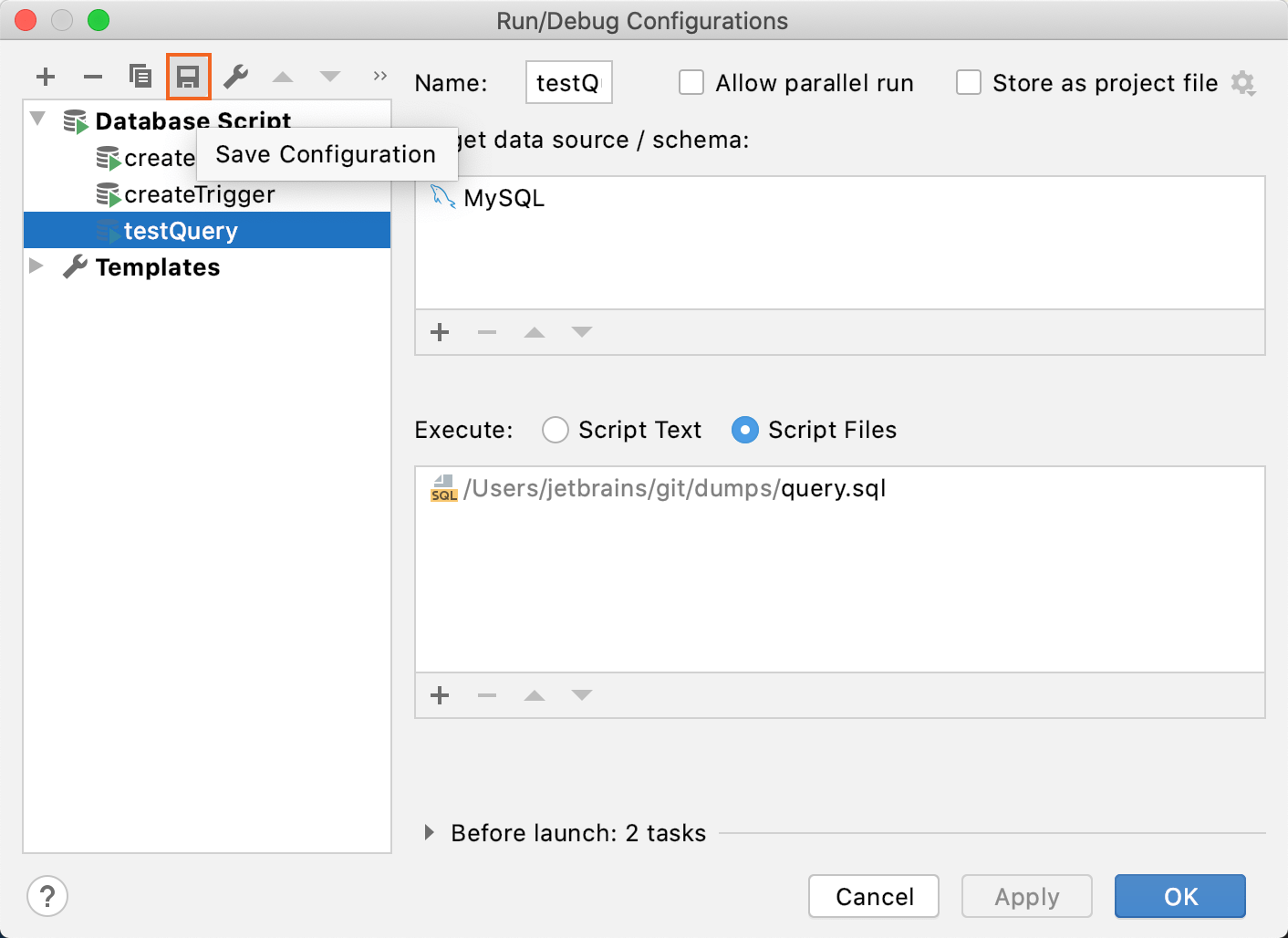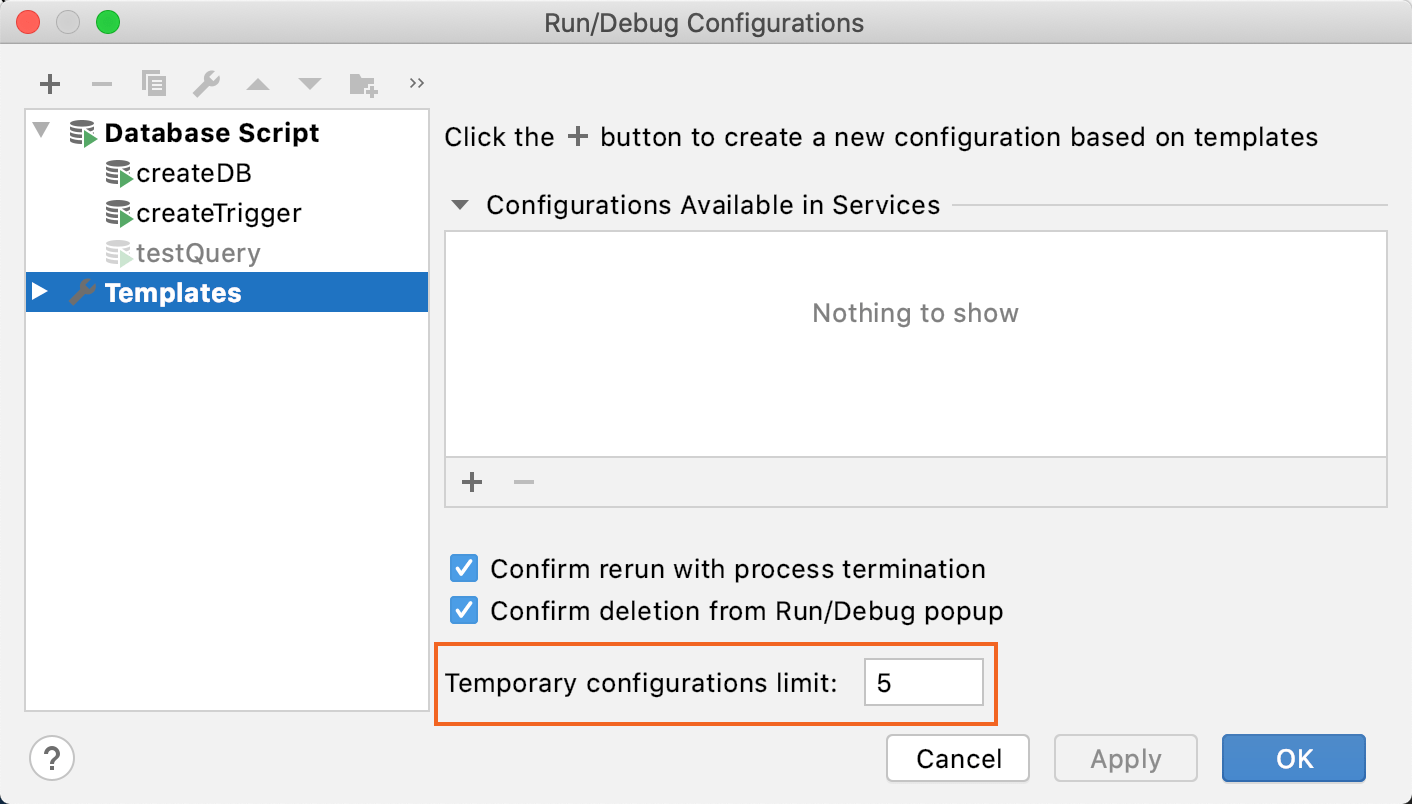Using run configurations
To run your code in DataGrip, you can use run configurations. Each run configuration represents a named set of run startup properties.
Each run configuration type has its own default settings. Whenever a new run configuration of the respective type is created, it is based on these default settings.
Temporary run configurations
A temporary run configuration is automatically created every time you select from the context menu. To call the context menu, right-click the object or area.
Save a temporary configuration as permanent
Select the temporary configuration in the Run/debug configurations dialog and click
 on the toolbar.
on the toolbar. Alternatively, select the temporary configuration in the run configuration selector and then click Save <configuration name> Configuration.

Temporary configurations are marked with semi-transparent icons and are managed the same way as the permanent configurations.
By default, five temporary run configurations are allowed per database, so when you create the sixth configuration, the one created first is removed, and so on. To change this limit, use the Temporary configurations limit field in the Templates page of the Run/debug configurations dialog.

Permanent run configurations
A permanent run configuration is explicitly created for a particular script or a code snippet. If there is no permanent configuration for an item, DataGrip automatically creates a temporary configuration for it, when you select from the context menu. To call the context menu, right-click the object or area.

Run configuration templates
The templates with default run configuration settings are listed in the Run/Debug Configurations dialog under the Templates node. They denote the settings that are used when new run configurations are created.
You can set the default settings for a specific configuration type that will become applicable to any run configuration of this type created later. Changing defaults does not affect the existing run configurations.
The process of editing per-type default configuration settings is described in Change templates of run configurations. The process of creating or editing custom run configurations is described in Create and edit run configurations.